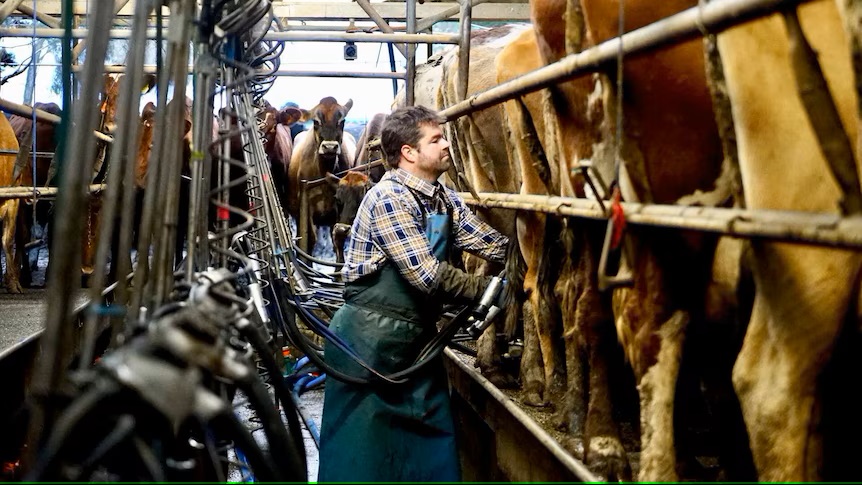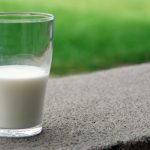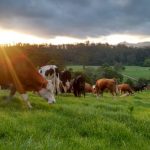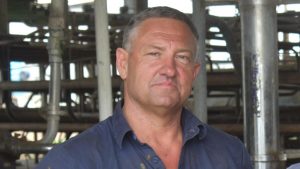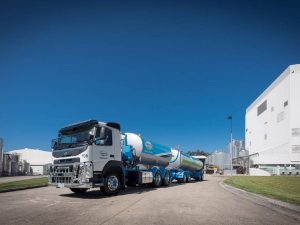
Milk is no longer a dollar a litre at the supermarket, but even though you are paying more, those who produce it are being paid less.
A two-litre carton of milk now costs at least $3.10 and a 500-gram packet of grated cheese has a $7 price tag.
While most of us are baulking at the increased cost of keeping a family fed, dairy farmers who produce some of that food are copping a 10-16 per cent pay cut.
That loss of income is pushing many young Australian farming families to the brink.
Irrewillipe farmer Jason Smith fought back tears as he described the pressure of being at breaking point.
“I am going to try and get through,” he said.
“I’m not giving up, but I came so close the other day [when he heard about the milk price] — I haven’t been so depressed and down in a long time.
“It’s really hard.
“I am sure that the average consumer goes to the store sees they can’t afford to buy our products and thinks the farmers must be going alright, but we’re not — we’ve just had a huge cut.”
The milk company Mr Smith supplies to has cut prices so drastically that he will lose $217,000 from his milk cheque next year.
That’s the money he uses to pay the employees who help run his 400-cow dairy farm.
Some of those workers will likely be moved on and the plans Mr Smith had to upgrade equipment on his farm have been cancelled.
He said it will be a hard year ahead.
“As I get older and fatter and sorer, having to work harder is not great,” he sighed.
“Dairy farming is hard — I have my second round of hernias, a torn rotator cuff that won’t heal, but I’ve got to think ‘How the hell do I cut costs for $200,000?’
“I have another friend who is letting go a staff member, I am letting go a staff member — just imagine how many people are going to lose their jobs?”
‘Significant impact’
Dairy Farmers Victoria leader Mark Billing farms just up the road from Mr Smith and is also worried about the future of the industry.
He believes the volume of milk Australia produces each year will continue to decline, in part because of the lower milk prices being paid to producers.
“I think with these numbers we are looking at it’s going to be a significant impact on farmers,” Mr Billing said.
Milk production has been in a downward spiral for more than 20 years and the dairy processing sector is also struggling as shoppers turn to cheaper imported cheese and butter.
Despite Australia being one of the world’s largest exporters, our dairy imports, mainly from New Zealand, jumped 36 per cent in 2022-2023 from the previous year.
Craig Emmett farms at Stanhope in northern Victoria where the weather has been good — rain has fallen and irrigation water is in decent supply.
His farm has the strong foundation of doing business for four generations, but he agrees that a cut in price will add to a cut in producers.
“We are a generational farm and I do benefit from that,” Mr Emmett said.
“We have a good equity level, and that helps, but we still need to keep our costs under control so we do make money.
“We’ve been through a time when people had to draw down equity to keep going and I don’t think people are prepared to do that anymore.”
Fighting for the future
What has helped farmers for the last few years has been a lack of milk and high demand from major processors, which have been buying every litre produced.
It was a glimmer of hope for those still financially and mentally bruised and battered from what has been a difficult 21st century in dairy.
Since the start of the century more dairy farmers have gone out of business in Australia than those who remain.
In 2001 Australia produced 11.3 billion litres of milk and in the coming year many predict the nation will struggle to produce more than 8 billion litres.
The lack of milk and a new mandatory code brought in after the 2016 milk price crisis, when Murray Goulburn and Fonterra dramatically and retrospectively cut milk prices, brought stability to the market.
Companies needed milk and by law they had to publish their minimum milk price for the year ahead by the start of June.
A rush to secure supply saw milk prices rise to record levels and insulated farmers from high inflation.
But this year milk companies dealing with their own inflation pressures have decided they’ve had enough.
Canadian owned giant Saputo, which took over Murray Goulburn, put it like this:
“Our opening milk price factors in ongoing global market volatility due to subdued demand, as well as greater variability in domestic markets,” director of milk supply and planning Kate Ryan said.
New Zealand-owned giant Fonterra told its farmers in a letter that it was dropping its price by 13 per cent due to “the global market for cheese”.
Farmers say that decision and the explanation behind it will hurt regional employment and financial confidence in towns.
Rural flow-on effects
In most small rural communities, farming businesses and the families they employ keep schools enrolled, essential services staffed, and retail outlets in business.
“Farmers were still leaving when we had the good price — imagine how many more are going to leave now,” Mr Smith said.
“This is going to affect our whole industry, and not only that, it will affect every shop in town.”
Jacob Gilley left teaching to become a dairy farmer at Stanhope and says smaller farming businesses such as his are few and far between.
“You see companies and people getting bigger and bigger and it seems like the smaller dairy farmers are starting to miss out a bit,” he said.
“You hope that doesn’t become the future.
“It’s fantastic driving around the country side and seeing dairy farms and cattle out in the paddocks and there has already been a lot disappear over the last 20 years.”
But back in supermarkets during a period of high inflation, farmers worry that people won’t care about a milk price cut because the cut to farmers is not reflected on their supermarket dockets.
“We’ve had all these increases in the cost of food — shredded cheese is $12 a bag,” Mr Smith said.
“One litre of long life milk was $1.40 and it’s now $2.80 [locally] — it’s not going to drop by 13 per cent.
“Life’s hard enough as it is without doing it for nothing.”
You can now read the most important #news on #eDairyNews #Whatsapp channels!!!
🇺🇸 eDairy News INGLÊS: https://whatsapp.com/channel/0029VaKsjzGDTkJyIN6hcP1K
